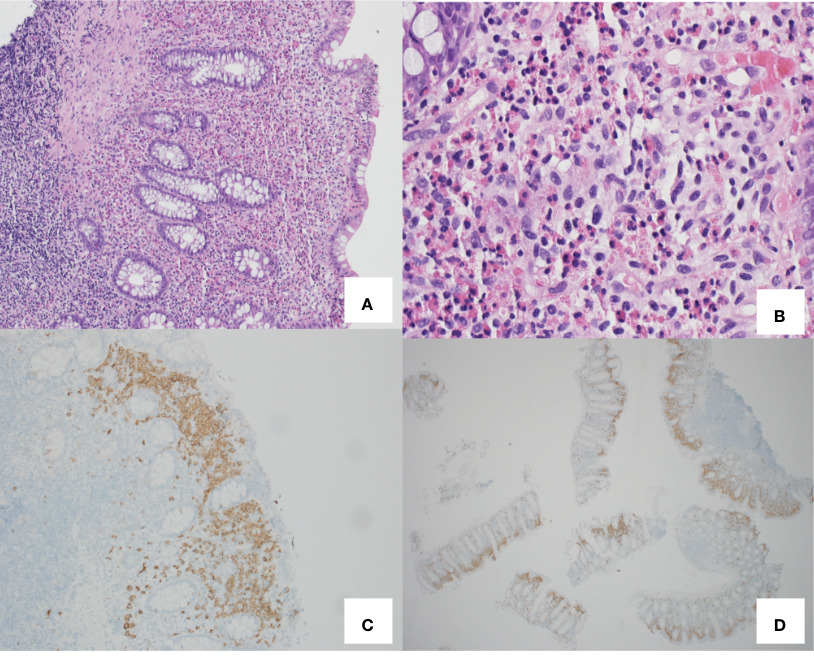Tuesday Poster Session
Category: Colon
P3781 - A Decade of Pain: Diagnosing Indolent Systemic Mastocytosis in a Young Female - A Case Report
Tuesday, October 29, 2024
10:30 AM - 4:00 PM ET
Location: Exhibit Hall E

Has Audio

Maryam Salma Babar, MD
Cleveland Clinic
Abu Dhabi, Abu Dhabi, United Arab Emirates
Presenting Author(s)
Maryam Salma. Babar, MD, Priti Joshi, MD, Jenan Ghaith, MD
Cleveland Clinic, Abu Dhabi, Abu Dhabi, United Arab Emirates
Introduction: Systemic mastocytosis is a rare constellation of disorders characterized by excessive proliferation and accumulation of mast cells in various organs, including the skin, bone marrow, liver, and gastrointestinal (GI) tract. Indolent systemic mastocytosis (ISM), a subtype of systemic mastocytosis, should be considered in the differential diagnosis of patients with persistent GI symptoms refractory to medical treatment. We report a rare diagnosis of ISM in a 29-year-old female who had been complaining of recurrent abdominal pain for over 10 years.
Case Description/Methods: A 29-year-old female, post-laparoscopic sleeve gastrectomy with gastric leakage, presented with dysphagia, heartburn, and chronic diarrhea for six years, managed on pantoprazole, and considered for Nissen fundoplication. Since age sixteen, she experienced recurrent abdominal pain, skin rashes, flushing, tachycardia, and diarrhea triggered by certain foods, exertion, and anxiety. No anaphylactic reactions or prior hospitalizations were reported. Examination showed a soft, non-tender abdomen, no skin rashes, a negative Darier sign, and normal labs, including serum tryptase. Colonoscopy revealed granular, suppurative mucosa in the cecum, appendiceal orifice, and ascending colon. Biopsies showed a significant increase in eosinophils and a prominent mast cell population exceeding 15/high-power field. The mast cells displayed a subepithelial band of diffuse CD117-positive cells and stained positive for CD25. These findings met one major and one minor criterion for indolent systemic mastocytosis (ISM). Financial constraints hindered further KITD816 mutational analysis. The patient received an epinephrine pen, lifestyle advice, and a trial of antihistamines with inadequate response. Later, she was started on omalizumab at 300 mg every four weeks, to which she responded well. Long-term monitoring will assess treatment response and the need for additional interventions.
Discussion: This case underscores the diagnostic challenges of ISM in patients with chronic GI symptoms post-bariatric surgery. It highlights the necessity of a thorough clinical evaluation and consideration of ISM in differential diagnoses. The positive response to omalizumab therapy after inadequate response to other treatments demonstrates the potential effectiveness of targeted biologic therapy in managing ISM. Recognizing ISM early is crucial for facilitating appropriate treatment and improving patient outcomes.

Disclosures:
Maryam Salma. Babar, MD, Priti Joshi, MD, Jenan Ghaith, MD. P3781 - A Decade of Pain: Diagnosing Indolent Systemic Mastocytosis in a Young Female - A Case Report, ACG 2024 Annual Scientific Meeting Abstracts. Philadelphia, PA: American College of Gastroenterology.
Cleveland Clinic, Abu Dhabi, Abu Dhabi, United Arab Emirates
Introduction: Systemic mastocytosis is a rare constellation of disorders characterized by excessive proliferation and accumulation of mast cells in various organs, including the skin, bone marrow, liver, and gastrointestinal (GI) tract. Indolent systemic mastocytosis (ISM), a subtype of systemic mastocytosis, should be considered in the differential diagnosis of patients with persistent GI symptoms refractory to medical treatment. We report a rare diagnosis of ISM in a 29-year-old female who had been complaining of recurrent abdominal pain for over 10 years.
Case Description/Methods: A 29-year-old female, post-laparoscopic sleeve gastrectomy with gastric leakage, presented with dysphagia, heartburn, and chronic diarrhea for six years, managed on pantoprazole, and considered for Nissen fundoplication. Since age sixteen, she experienced recurrent abdominal pain, skin rashes, flushing, tachycardia, and diarrhea triggered by certain foods, exertion, and anxiety. No anaphylactic reactions or prior hospitalizations were reported. Examination showed a soft, non-tender abdomen, no skin rashes, a negative Darier sign, and normal labs, including serum tryptase. Colonoscopy revealed granular, suppurative mucosa in the cecum, appendiceal orifice, and ascending colon. Biopsies showed a significant increase in eosinophils and a prominent mast cell population exceeding 15/high-power field. The mast cells displayed a subepithelial band of diffuse CD117-positive cells and stained positive for CD25. These findings met one major and one minor criterion for indolent systemic mastocytosis (ISM). Financial constraints hindered further KITD816 mutational analysis. The patient received an epinephrine pen, lifestyle advice, and a trial of antihistamines with inadequate response. Later, she was started on omalizumab at 300 mg every four weeks, to which she responded well. Long-term monitoring will assess treatment response and the need for additional interventions.
Discussion: This case underscores the diagnostic challenges of ISM in patients with chronic GI symptoms post-bariatric surgery. It highlights the necessity of a thorough clinical evaluation and consideration of ISM in differential diagnoses. The positive response to omalizumab therapy after inadequate response to other treatments demonstrates the potential effectiveness of targeted biologic therapy in managing ISM. Recognizing ISM early is crucial for facilitating appropriate treatment and improving patient outcomes.

Figure: Figures A and B: Low and high power views of biopsy tissue stained with H&E, showing an excess of eosinophils in the lamina propria with a few interspersed atypical mast cells (spindle cells).
Figures C and D: Low and high power views of CD117 immunostaining on the biopsy tissue, highlighting the presence of mast cells.
Figures C and D: Low and high power views of CD117 immunostaining on the biopsy tissue, highlighting the presence of mast cells.
Disclosures:
Maryam Babar indicated no relevant financial relationships.
Priti Joshi indicated no relevant financial relationships.
Jenan Ghaith indicated no relevant financial relationships.
Maryam Salma. Babar, MD, Priti Joshi, MD, Jenan Ghaith, MD. P3781 - A Decade of Pain: Diagnosing Indolent Systemic Mastocytosis in a Young Female - A Case Report, ACG 2024 Annual Scientific Meeting Abstracts. Philadelphia, PA: American College of Gastroenterology.
